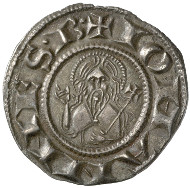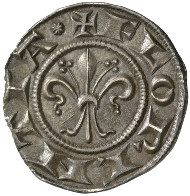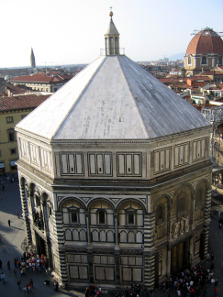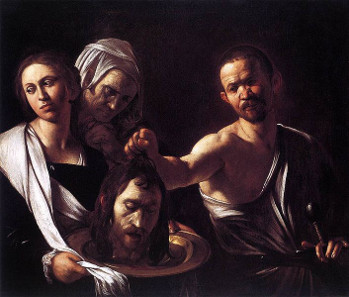courtesy of the MoneyMuseum, Zurich
translated by Teresa Teklic
Why was the human head the motif on coins for centuries, no, for millennia? And why did that change in the last 200 years? Ursula Kampmann is looking for answers to these questions in her book “Menschengesichter” (“Human faces”), from which the texts in this series are taken.
Florence, Republic (1189-1532). Fiorino d’argento, before 1260. Bust of Saint John the Baptist. Rv. Lily. © MoneyMuseum, Zurich.
In the Middle Ages, Italy is split into two major parties: Guelphs and Ghibellines, the followers of the Pope and the followers of the Emperor. These names subsume different local groups, which fought for their own interests in the name of strangers. In Florence, for instance, the rich upper class merchants and tradesmen, who did not participate in the local government, favoured the Pope, while the aristocracy tended to support the Emperor.
When the Pope announced Emperor Frederick’s II abdication in 1245, street riots broke out in the city. Led by aristocratic commanders, the militia fought the “popolo”, not, as you might think, the common people, but those who were anything but poor, namely wealthy non-aristocrats and their followers.
The Emperor’s supporters were victorious and for the next two years, one of Frederick’s II illegitimate sons governed the city as vicar in his father’s name. Within those two years, however, the political situation changed: Frederick and his followers lost influence. And after the Ghibellines suffered defeat in a battle outside the city walls, the citizens remaining inside the walls called out a republic with the words “Viva il popolo!”.
The Florence Baptistry. Richardfabi / Wikipedia.
On October 20, 1250, a constitution for Florence was ratified. The city would be governed under the shared leadership of the Capitano and the Podestà. One would be giving orders, the other executing them. The two high officials were sworn into office in the Florence Baptistry in the presence of the city’s entire population.
Michelangelo Caravaggio, Salome with the Head of John the Baptist, 1607. Source: Wikicommons.
The Baptistry was built in honour of John the Baptist, a fighter and paragon of resistance against all forms of tyranny. After all, John had fearlessly stood up to Herod the Great and his wife, until Salome’s dance pronounced his death by decapitation.
So when the citizens of Florence, between 1250 and 1252, chose this particular saint to represent them on their coinage, it was an unambiguous signal. It was the new government’s principal aim to ensure the leading mercantile class could prosper and thrive. A stable currency was a crucial enabler of economic growth and since 1252, this currency also included gold coins. This made Florence the first city to usurp the imperial right to issue gold coins.
But the “rule of the people” didn’t last very long. In 1260, the Popolo suffered a crushing defeat. The Ghibellines returned to power, though not for good either. It would take much suffering and bloodshed until Florence became a stable republic.
The next episode will tell you more about Emperor Frederick II, a ruler who was truly ahead of his time.
You can find all episodes in the series here.
A German edition of the book “Menschengesichter” is available in print and as ebook on the site of the Conzett Verlag.







